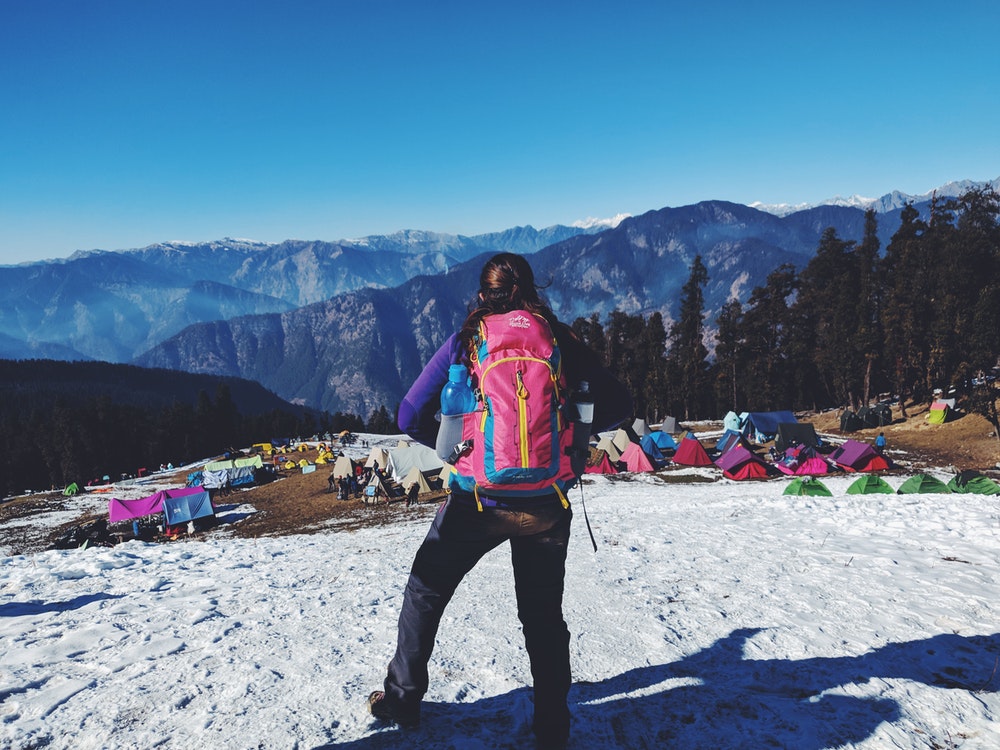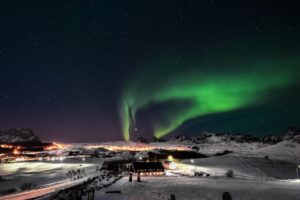
From frostnip and frostbite to hypothermia and chilblains, excessive cold can turn a winter camping trip into a veritable nightmare. Having the right camping gear is essential for avoiding temperature-related illnesses and injuries. With the six items below, you can stay sufficiently warm in elevated mountain areas, even when the mercury takes a dive.
1. Base Layers With Moisture-Wicking Capabilities
Nothing will keep you warmer while camping in the mountains than the right clothing. Moreover, there’s no single item of clothing that can trump the efficacy of multiple, well-planned layers. Whether you’re at your campsite, climbing, or just doing some general exploring, you’ll have plenty of warmth and insulation for staving hypothermia and frostbite off. One key attribute to look for when packing your clothing, especially when building your base layer, is the ability to wick moisture away from the skin. If you get overly warm or frightened, or if you engage in any challenging physical activity, clothing made from natural fibers like silk, ceramic wool, or merino wool will draw moisture up and away from your skin to prevent its natural cooling effect. This will in turn keep chills at bay, and minimize body odors. There are also a number of synthetic fabrics that can be highly effective to this end as well.
2. A Warm, Well-Insulated Hat
Surprisingly, much of a person’s heat loss occurs from the top of the head. Thus, one of the absolute best ways to stay warm when temporarily living in freezing temperatures is by keeping your head covered. Consider bringing a wool-lined cap or balaclava with you. It’s also important to ensure that your head covering gives you good ear coverage as well. Balaclavas cover the neck and prevent heat loss from the top of the shirt or jacket while eliminating the need for scarves. They also provide excellent ear protection. If a balaclava isn’t your style, look for a sufficiently long insulated cap or a hat with snug-fitting ear flaps.
3. Insulated Sleeping Bag Liners and Sleeping Pads
Insulation is the keyword to remember when choosing and packing gear for any camping trip in cold, mountainous areas. An insulated sleeping bag liner will keep your body heat trapped inside of your sleeping bag. These are available as rectangular, sheet-like additions or as mummy-like liners that fit bags snugly from all sides and from end to end. Adding an insulated sleeping pad to your gear will give you a softer and more pliable sleeping surface while adding an additional layer of heat loss prevention.
4. An Elevated Tent
If you’ll be pitching your tent on the ground, then you’ll definitely want wind-resistant tent stakes. These will keep your tent securely anchored in the compacted snow. When the winds are high, having tent stakes move or slip out can create a tremendous amount of frustration, and could result in a fair amount of your gear being turned over or even blown away. Elevated tents such as tents that can be mounted directly to the rooftop of your vehicle will prevent these and many other issues. For instance, bringing along one of the best Toyota 4Runner rooftop tents can keep you from being woken up by slushy, melting snow, or freezing ground temperatures that exceed the insulating abilities of all sleeping pads and sleeping bags. Not only will an elevated tent keep you warmer, but it can additionally provide an increased layer of security.
5. Hand and Feet Warmers
In extremely cold weather, your biggest concerns are always your extremities. These are the first places to lose feeling due to the increased challenge of getting good blood flow. Keep your fingers and fingertips protected from frostbite with well-insulated, waterproof gloves. Be sure to bring along at least two pairs. Pack multiple pairs of wool socks, and a goodly number of toe warmers. It’s also best to pack leg gaiters as well, especially if you intend to do a lot of walking. Leg gaiters will keep snow, slush, and other freezing precipitation from getting down into your boots. When choosing your camping boots, look for well-insulated, water-resistant options that will keep your socks nice and dry. Your boots should also be sufficiently large for comfortably accommodating thick, wool socks and any toe warmers that you’ll be using.
6. Hot, High-Energy Food
One of the joys of camping in the mountains during winter is being able to indulge in plenty of high-energy foods guilt-free. Proper sustenance is important when you’re trying to keep your body warm. Bring along insulated water bottles so that you can stay hydrated by sipping on water throughout the day, large-thermoses for carrying hot teas, soups, stews, coffee, or cocoa, and cooking amenities for regularly serving hot, simple meals. Oatmeal is an excellent breakfast staple and can be mixed with dried fruits, nuts, or even nut butter. Freeze-dried entrees can make good nutrition a lot easier while camping. Ultimately, your goal should be to bring along a number of calorie-dense food options that are easy to prepare and serve in almost any environment.
Don’t let extreme weather take the joy out of your next camping trip. When camping in the mountains, make sure that you’ve got everything you need for staying sufficiently warm all of the time. With the right sleeping gear, tent, and clothing, you can enjoy your camping adventure both comfortably and worry-free.


